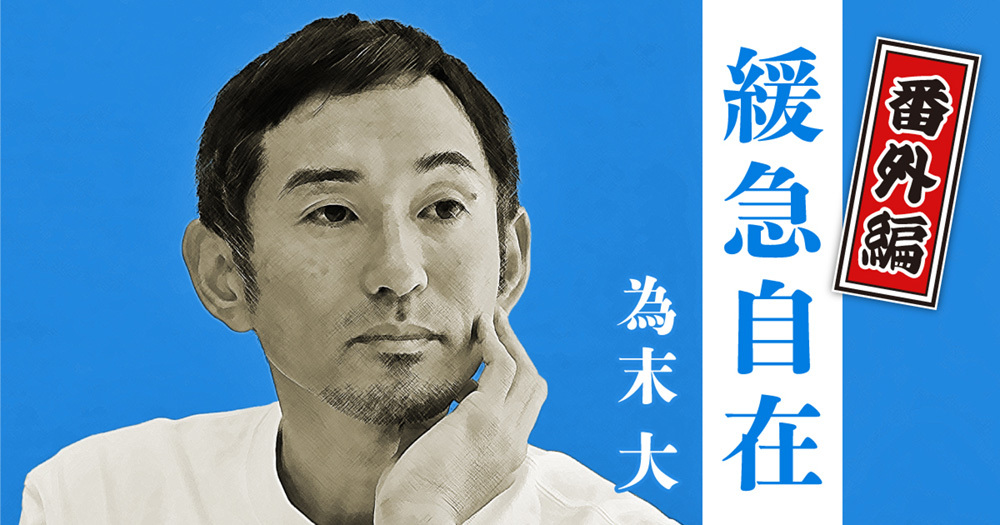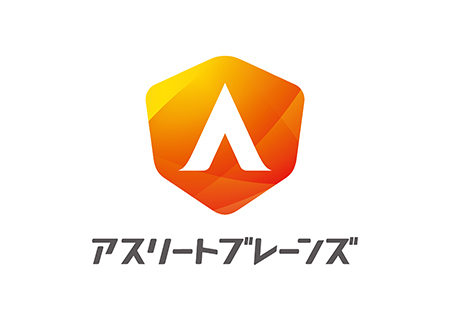"At Your Own Pace" is a serialized interview column in Web Dentsu Inc. News where Mr. Dai Tamesue freely discusses "what's on his mind right now." This special edition focuses on his book "The Theory of Mastery" (published by Shinchosha), released on July 13th. For Part 1, we asked Mr. Hibi from Dentsu Inc. Future Creative Center, who has long collaborated with Mr. Tamesue on the Athlete Brains project, to contribute a piece serving as the prologue to this series.
In installments #02 through #06, author Tamesue and producer/editor Fumio Iwasa, who edited "Theory of Mastery," engaged in a dialogue-style conversation centered on "stories you can only hear here" – including the background leading to the book's writing, memories, and the hardships involved. We hope you enjoy their numerous comments based on the profound theme of "how humans should live."
(Web Dentsu Inc. Editorial Department)
"Observation" is analysis. But that alone doesn't constitute the "Break" stage of "Shu-Ha-Ri." (Hiroshi Tamura)
Iwasa: Last time, we discussed the "break" stage of "Shuhari" (master-disciple progression), breaking it down as "break" = "what-what" × "this-this." That was essentially the first part of our story.
Tamesue: "What-what" = "Observe (kan)". In other words, we defined it as "observing" things, specifically their details.
Iwasa: What surprised me was applying the kanji for "heart" (心) to the subsequent "this and that."
Tamesue: Not "heart" (こころ), but the core "heart" (心). It means creating the backbone or foundation of your own thinking—the very center. Merely observing details doesn't lead to "break."
Iwasa: So it's the crucial "heart" (心).
When "heart" came up, I had an "aha!" moment. (Iwasa Fumio)
Iwasa: "Heart" is like the hub of a wheel. Imagine countless "observation" points radiating out from it.
Tamura: It's because there's a solid "heart" that stability is born. At first, I thought about expressing it as "core"... You know how they say "hit the sweet spot" in a golf tee shot?
Iwasa: We had quite the heated debate about that, didn't we?
Tametsu: Fundamentally, whether it's "heart" or "core," you can't define what it actually is.
Iwasa: In a way, it's something we grasp intuitively. The image is like having a "solid core," but then, where exactly is the "core" defined? What shape does it have? How do you train it? Even if asked, you can't give a clear answer.
Tamesue: The state of having grasped the heart is, conceptually, like the "seismic isolation structure" of a skyscraper. It's flexible yet never loses its center. Top athletes generally possess this ability to "release tension," but it's not something easily attained.
Iwasa: I've heard that the perspective of a charismatic CEO visiting a factory is exactly like that of someone who has truly "mastered the heart." When the president is coming tomorrow, the factory manager and everyone else scrutinize every single detail to prepare. But the charismatic CEO only points out two or three completely unexpected things. Yet, those points are terrifyingly spot-on.
Tamese: It's important to "see" the details, but it's also about asking, "Hey, isn't the 'heart' of this and that wobbling?"
Iwasa: In my publishing industry, proofreading is the equivalent. You'd think the most seasoned professionals would scrutinize everything like hawks—checking for typos, awkward phrasing, historical inaccuracies—yet a mistake might slip through in the largest font size (Editor's note: referring to text size) for the title. And no one even notices it.

Mr. Fumio Iwasa: Producer/Editor. Graduated from Jiyu Gakuen. Served as a business book editor at the Japan Productivity Center and Diamond Inc., and as editor-in-chief of "Harvard Business Review" before becoming independent in 2017. Producer of the books "Shin Nihon" and "Mousou suru Atama & Shikou suru Te," as well as Tamesue Dai's "Jukutatsu Ron." Currently serves as editor-in-chief of the audio media platform 'VOOX' and as a Fellow at Eiji Press.
Tamesue: To understand the "heart," you need the "practical knowledge" of "numbers" and "quantity"—or in my terms, "form" and "observation." In other words, you cannot reach the stage of the "heart" without going through the process of "form" and "observation."
Iwasa: This is just my guess, but someone like you, Tamesue-san, probably emphasized "observation" during your athletic career, right?
Tamesue: Exactly. People who like to verbalize things generally enjoy "observing." The pitfall here is observing too much, observing too much, and then overthinking it (laughs).
Iwasa: As a result, you lose sight of the crucial "Heart." That's the difficulty of "mastering something," isn't it?
Tamura: And at the same time, the final character of the "theory of mastery" starts to become vaguely visible. Actually, the most common questions from readers are about "observation" and "heart."
Iwasa: Perhaps there was some confusion when we broke down the "break" (ha) in shuhari into "observation" and "heart." On the other hand, as an editor, I'm thrilled when I hear things like, "I really understood the connection and structure of shuhari." While "observation" is objective and Western, "heart" is subjective and Japanese.
Tamura: I believe both are necessary for mastery. Both meticulous data analysis and an unshakable conviction, no matter what happens.
Iwasa: And so, both the "Theory of Mastery" and this series are finally reaching their climax.
Tamesue: "Gaining the heart" means grasping the "core" of things to achieve "freedom" – it signifies approaching a kind of liberation.
Iwasa: Exceptional athletes have an unshakable core. So no matter what moves their opponent makes, or even if a sudden gust of wind strikes, they can adapt with fluidity—this move, then that move.
They know "play," they know "form," they know "observation," they know "mind." Aren't they practically invincible?
Tamesue: No. To truly master the path to mastery, one final step is needed—the finishing stage. I myself cannot yet proudly say I've reached that point.

The "mind" is a supple, resilient core.
Iwasa: Even after becoming "Tamesue of the World," you still haven't fully reached it—that's the "final character." And at the same time, that's precisely the appeal of the "Theory of Mastery."
Tamesue: From a child's perspective, the perspective of "play," it's precisely because it can't be easily attained that it becomes interesting, I suppose.

The path to mastery is never smooth.
(Continued in Final Episode #06)
Back issues of 'Athlete Brains: Tamesue's 'Mastering Pace and Rhythm' serialized on Web Dentsu Inc. are available here.













